I am working through "Forecasting with Exponential Smoothing". I am stuck on exercise 16.4 on the part that states:
The data set
partxcontains a history of monthly sales of an automobile part. Apply a local Poisson model. Parameters should be estimated by either maximizing the likelihood or minimizing the sum of squared errors.
The local Poisson model is defined as:
I have the following code, but it seems to be stuck. The optimization always returns something close to the starting values.
Am I fitting the local Poisson model correctly?
library(expsmooth)
data("partx")
S <- function(x) {
a <- x[1]
if(a < 0 | a > 1)
return(Inf)
n <- length(partx)
lambda <- numeric(n+1)
error <- numeric(n)
lambda[1] <- x[2]
for(i in 1:n) {
error[i] <- partx[i]-rpois(1,lambda[i])
lambda[i+1] <- (1-a)*lambda[i] + a*partx[i]
}
return(sum(error^2))
}
# returns a = 0.5153971 and lambda = 5.9282414
op1 <- optim(c(0.5,5L),S, control = list(trace = 1))
# returns a = 0.5999655 and lambda = 2.1000131
op2 <- optim(c(0.5,2L),S, control = list(trace = 1))



